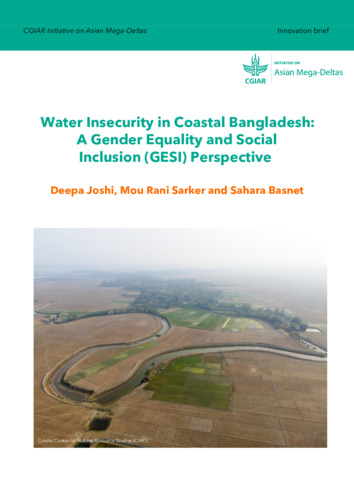Water Insecurity in Coastal Bangladesh: A Gender Equality and Social Inclusion (GESI) Perspective
Abstract
With the increasing feminization of agriculture, women are taking on greater roles and responsibilities in agricultural labor, leading to heightened dependence on water resources. While women’s water challenges are often framed as being limited to domestic use, and productive water use is typically attributed to men, this assumption generalizes the issue. Research on gender and water has predominantly focused on domestic water, sanitation, and hygiene, leaving the intersection of gender and productive water use underexplored. This study seeks to fill this gap by examining the complexities of both agricultural (productive) and domestic water insecurity through an intersectional lens, considering differences across gender, class, land ownership, age, and social identity. We employed the IWISE (Individual Water Insecurity Experience) Scales and the AgWISE (Agricultural Water Insecurity Experience) module to assess water insecurity among 800 individuals in southern coastal Bangladesh.
More than half of the female respondents (57.50%) reported significant challenges with productive water access and use, compared to 73.75% of men. Similarly, both men (29%) and women (42.50%) were impacted by domestic water insecurity. In case of agricultural water, men reported higher economic loss (84%), emotional stress (71%), and physical challenges (68%) due to agricultural water insecurity. Women reported lower economic loss (68%), physical challenges (57%), and emotional stress (56%), likely reflecting social norms that normalize their struggles. AgWISE data reveals disparities in water insecurity by age, land ownership, marital status and household headship. Men in all age groups report more agricultural water challenges than women, but women over 60 years old faced the highest water insecurity, indicating their significant involvement in fieldwork. Smallholder male farmers experience the greatest insecurity (75.95%), while large landowners face the least (60%). Both women and men with no spouse (widowed or divorced) tend to face highest water insecurity, but these challenges are typically pronounced for men. Similarly, all FHHs report difficulty accessing water, compared to 75% in MHHs. Hence, water insecurity is multifaceted and influenced by intersecting factors. Effective policies must reflect these complexities to promote sustainable water governance.

